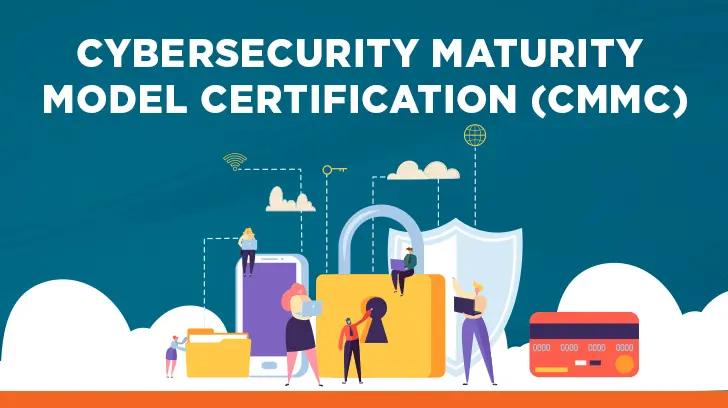In an era of increasing data breaches and cyber threats, ensuring data privacy and integrity has never been more critical. The CybersecurityMaturity Model Certification (CMMC) is a robust framework designed to bolster cybersecurity practices and protect sensitive information. By adhering to CMMC requirements, organizations can significantly enhance their data security posture, safeguarding both their operations and their clients. Here’s a look at how CMMC achieves this through various stringent measures.
Implements Rigorous Access Control Mechanisms
CMMC emphasizes the importance of strict access control measures to protect sensitive information. By defining clear user access permissions and restrictions, CMMC helps ensure that only authorized personnel can access critical systems and data. This approach minimizes the risk of internal and external threats by enforcing the principle of least privilege, where users are granted only the access necessary for their roles.
Moreover, access control in CMMC involves implementing multi-factor authentication (MFA) and robust password policies. These additional layers of security make it more difficult for unauthorized individuals to gain access, thus enhancing overall data privacy. Regular reviews and updates of access permissions ensure that outdated or unnecessary access rights are promptly revoked, further safeguarding sensitive information.
Enforces Continuous Compliance Monitoring
Continuous compliance monitoring is a cornerstone of CMMC, ensuring that organizations consistently adhere to required security practices. This ongoing oversight helps identify and address potential vulnerabilities before they can be exploited by cybercriminals. By integrating automated monitoring tools, organizations can track compliance in real-time, making it easier to manage and report adherence to CMMC requirements.
Regular assessments in CMMC are crucial for maintaining a high level of security. These assessments evaluate the effectiveness of implemented controls and highlight areas that may need improvement. By staying proactive and addressing compliance issues promptly, organizations can sustain robust data privacy and integrity, reducing the likelihood of security breaches and ensuring regulatory adherence.
Utilizes Advanced Cryptographic Techniques
Cryptographic techniques play a vital role in protecting data from unauthorized access and ensuring its integrity. CMMC mandates the use of advanced encryption methods to secure sensitive information both at rest and in transit. These cryptographic measures convert data into a format that is unreadable without the appropriate decryption key, providing an additional layer of security against unauthorized access.
The use of cryptographic algorithms, such as AES (Advanced Encryption Standard), ensures that data remains confidential and secure from prying eyes. CMMC also encourages the implementation of secure key management practices, which involve protecting encryption keys and regularly updating them to prevent unauthorized decryption. This focus on advanced cryptographic techniques helps organizations maintain the highest levels of data privacy and integrity.
Integrates Real-Time Threat Detection Systems
Real-time threat detection is a critical component of CMMC, designed to identify and respond to potential security threats as they occur. By utilizing sophisticated monitoring tools and threat intelligence systems, organizations can detect anomalies and suspicious activities in real-time, enabling them to take swift action to mitigate potential risks.
CMMC requires the implementation of intrusion detection systems (IDS) and security information and event management (SIEM) tools, which provide comprehensive visibility into network traffic and system activities. These systems analyze data patterns and identify deviations that may indicate a security breach or cyber attack. By integrating real-time threat detection, organizations can enhance their ability to protect data and maintain its integrity against evolving threats.
Enforces Strict Data Sanitization Protocols
Data sanitization is essential for ensuring that sensitive information is properly disposed of and cannot be recovered or misused. CMMC mandates strict data sanitization protocols to prevent unauthorized access to discarded or obsolete data. This process involves securely wiping data from storage devices and ensuring that it cannot be reconstructed or retrieved.
CMMC requirements also include using certified data erasure tools and methods that meet industry standards for data destruction. By adhering to these protocols, organizations can ensure that sensitive information is thoroughly and securely deleted, reducing the risk of data breaches and maintaining the integrity of their data protection efforts.
Facilitates Comprehensive Audit Trails
Comprehensive audit trails are a key feature of CMMC, providing a detailed record of all system activities and data access events. These audit trails are essential for tracking user actions, identifying potential security incidents, and ensuring compliance with CMMC requirements. By maintaining thorough logs, organizations can review and analyze activities to detect any unusual or unauthorized behavior.
CMMC requires that audit trails be securely stored and regularly reviewed to ensure their accuracy and integrity. This practice helps organizations maintain transparency and accountability, making it easier to address any security issues and demonstrate compliance during assessments. Comprehensive audit trails are a valuable tool for enhancing data privacy and integrity, as they provide a clear and verifiable record of all system interactions.
By implementing these rigorous CMMC measures, organizations can significantly enhance their data privacy and integrity. From access control and continuous monitoring to advanced cryptographic techniques and real-time threat detection, CMMC provides a comprehensive framework for safeguarding sensitive information. Adhering to CMMC requirements helps organizations stay ahead of emerging threats and maintain the highest data security standards.





